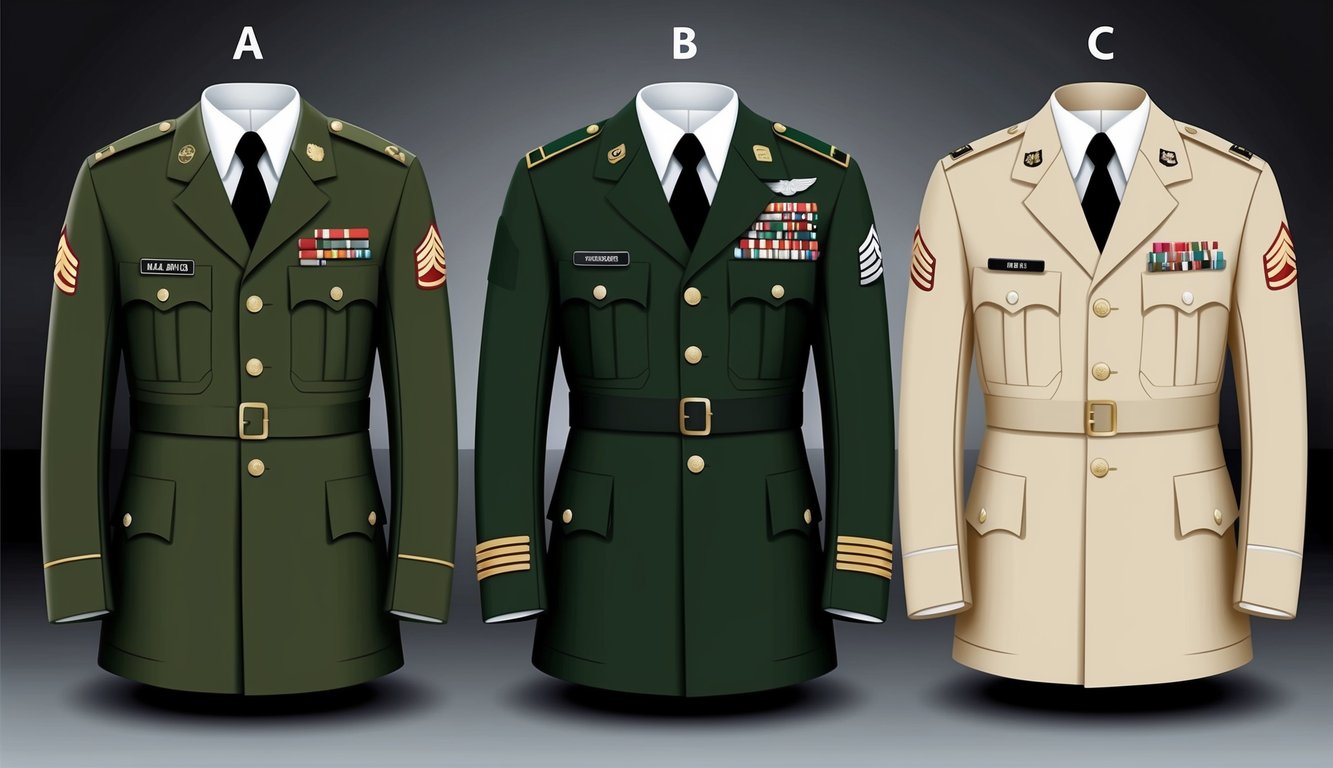Army uniforms are essential for military identity and practicality.
The U.S. Army categorizes uniforms into three primary classifications: Class A, Class B, and Class C, each designed for specific purposes and environments.
**Class A uniforms** are the most formal, commonly referred to as “dress blues,” and are utilized for special events and ceremonies.
This uniform features a dark blue coat, light blue trousers for men or a skirt for women, and a white dress shirt.
**Class B uniforms** are less formal, generally comprising a white dress shirt and trousers without the coat.
They’re typically worn for daily office activities or less formal occasions.
**Class C uniforms**, known as [Army Combat Uniforms](https://sucharmy.com/best-military-uniforms-and-camouflage-clothing/) (ACUs), are tailored for practical field applications.
These durable garments sport camouflage patterns, making them suitable for training and combat.
### Key Takeaways
– Army uniforms are categorized as Class A (formal), Class B (semi-formal), and Class C (combat)
– Class A is reserved for formal occasions, while Class C is intended for field use
– Each uniform type is designed to meet specific needs and adheres to strict regulations
### Understanding Army Uniform Classifications
Army uniforms are segmented into different classifications, each tailored for particular situations to uphold consistency and professionalism throughout the military.
### Classification Overview
– **Class A uniforms:** These are the most formal military attire for occasions like ceremonies and official events, consisting of a coat, dress shirt, tie, and dress pants or skirt.
– **Class B uniforms:** These have a relaxed style suitable for daily office work or less formal events, typically featuring a dress shirt without a coat and tie.
– **Class C uniforms:** Also known as combat or [utility uniforms](https://sucharmy.com/best-military-style-cargo-pants/), these are meant for fieldwork and training, focusing on comfort and utility.
### Significance of Each Class
Class A uniforms symbolize the Army’s pride and tradition, representing the highest standards of appearance with the display of medals and ribbons.
Class B strikes a balance between professionalism and comfort, while Class C prioritizes practicality, being crafted from robust materials with various pockets for equipment.
Each class serves a vital role in the Army experience, covering events from formal gatherings to readiness for combat.
### Class A Uniforms
The Army Class A uniform stands as the most prestigious attire for soldiers, showcasing the professionalism of the U.S. Army during official events.
#### Components and Accessories
Class A includes a dark green service coat, light green dress shirt, and dark green trousers for men.
A black tie and polished black dress shoes complete the look, with rank insignia on the shoulders and medals on the left chest.
You’ll need to wear a service cap or beret based on your unit, and white gloves may be required on formal occasions.
#### When to Wear Class A
Class A uniforms are appropriate for:
– Official ceremonies
– Promotion boards
– Military weddings
– Court appearances
– Formal dinners
They are also suitable for funerals, memorial services, and when representing the Army publicly, such as during recruitment events.
### Class B Uniforms
Class B uniforms blend formality with practicality, making them versatile for several settings.
#### Key Differences from Class A
Class B uniforms are more relaxed and are characterized by a dress shirt with an open collar.
Women wear a neck tab instead of a tie, and the garrison cap is typically worn instead of a service cap.
Included items are:
– Short or long-sleeved shirt (usually tan)
– Dress trousers or skirt
– Black dress shoes
– Dress socks
– Belt with [brass buckle](https://sucharmy.com/best-military-style-belts-with-buckles/)
#### Appropriate Occasions for Class B
Class B uniforms are ideal for:
– Daily office work
– Classroom environments
– Less formal ceremonies
– Certain social functions
They represent a business casual equivalent within the Army, allowing for a polished look without the full formalities of Class A.
### Class C Uniforms
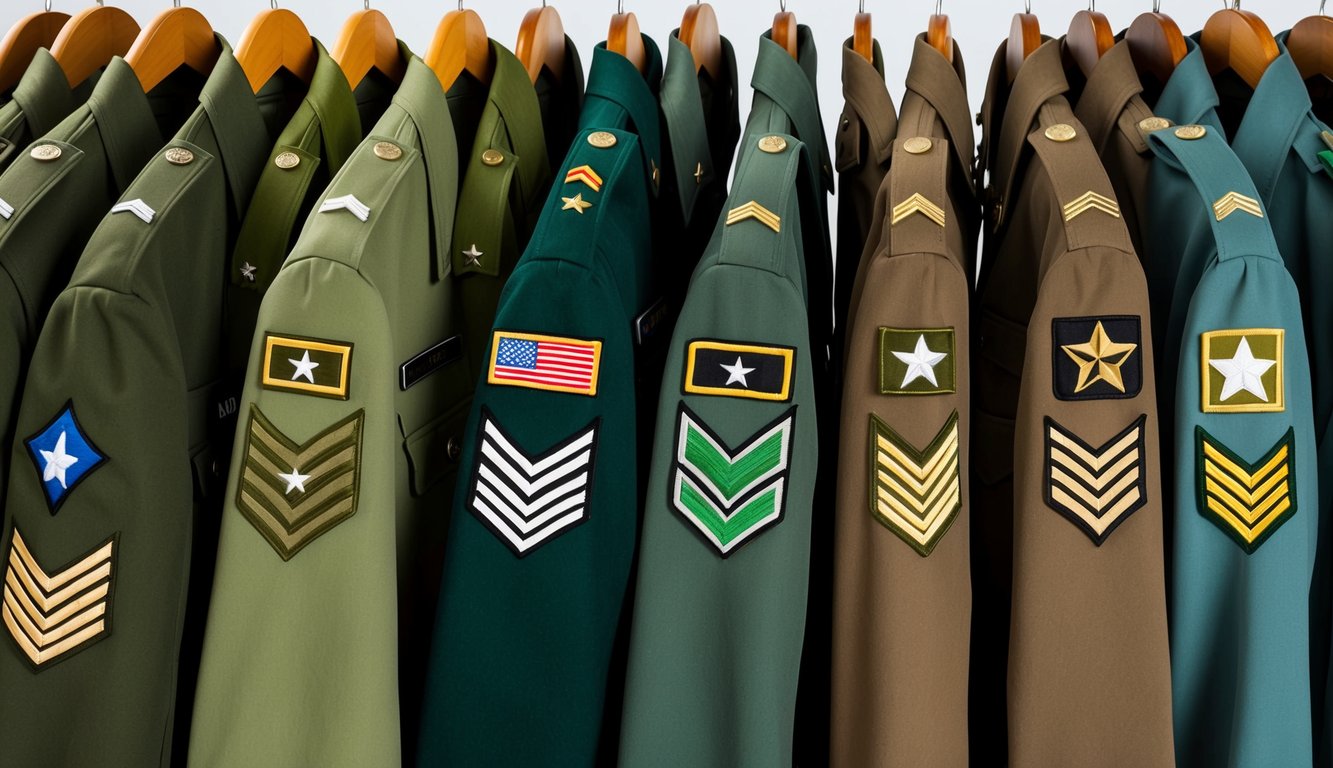
Class C uniforms, or Army Combat Uniforms (ACUs), are designed with functionality, durability, and camouflage in mind, appropriate for combat or training environments.
#### Defining the Combat Uniform
The ACU consists of a jacket, trousers, patrol cap, and [combat boots](https://sucharmy.com/best-combat-footwear-for-different-terrains/), crafted from flame-resistant fabric with a digital camouflage pattern that enhances concealment.
### Field and Operational Use
Worn during field training, deployments, and daily garrison duties, Class C uniforms endure various environmental stresses and offer ease of movement.
### Insignia and Personalization
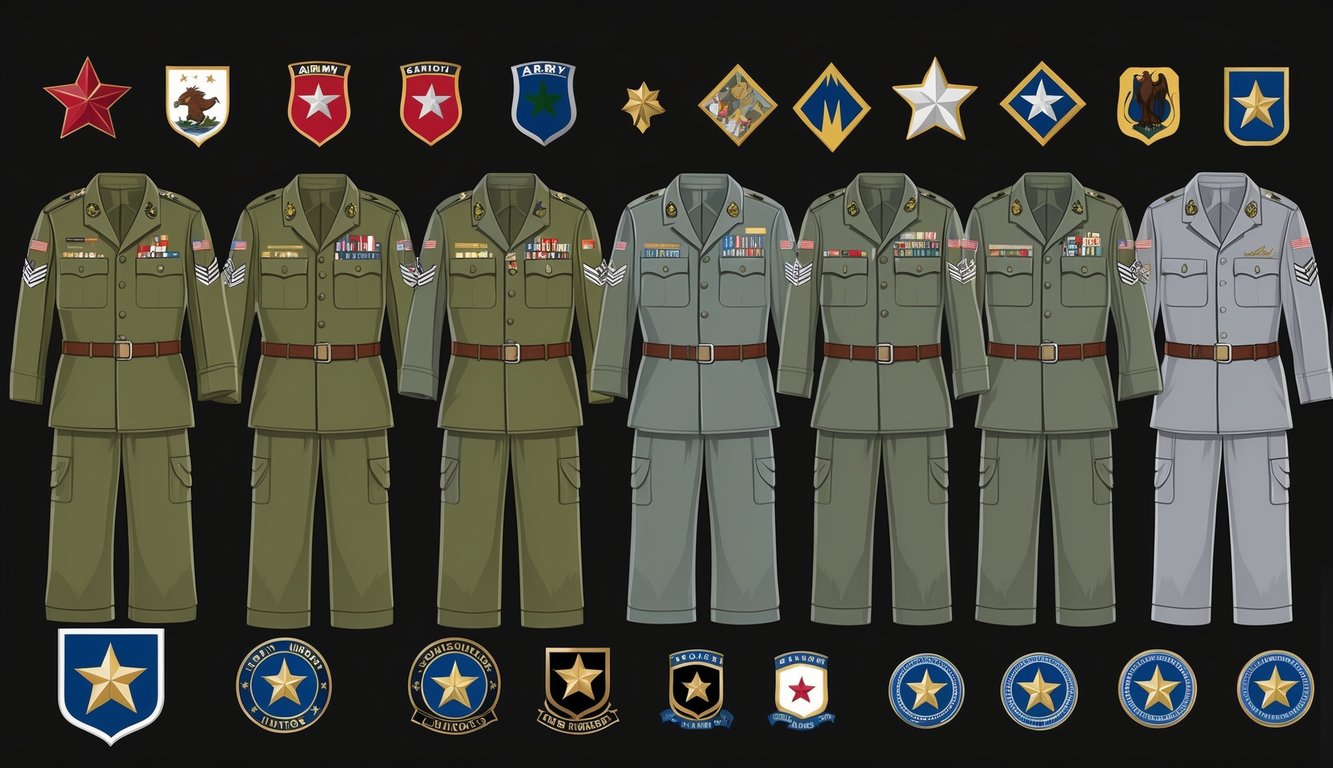
Insignia and personalization are vital components within Army uniforms, providing insight into a soldier’s rank, skills, and unit affiliation.
These badges maintain order and facilitate quick recognition of authority.
#### The Role of Insignia
Insignia serve as visual identifiers that relay important information about the wearer, including rank, branch, and skill badges that celebrate accomplishments.
### Placement and Significance
The placement of insignia adheres to strict guidelines to ensure consistency and visibility.
Rank insignia are prominently displayed, assisting in the swift identification of authority, while unit patches promote belonging within a soldier’s division.
### Accessory Standards
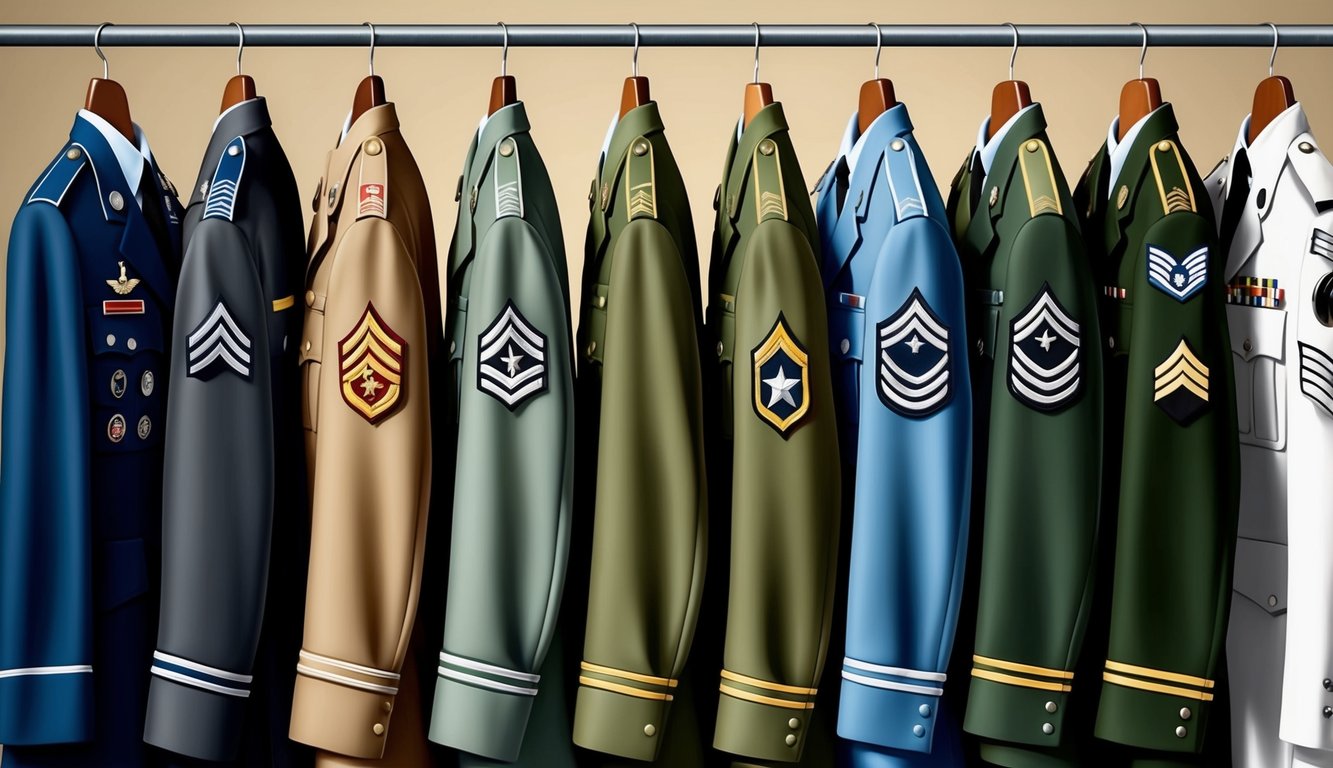
Army uniform accessories are regulated, ensuring a uniform appearance while allowing for limited personal expression.
#### Regulations on Army Accessories
Guidelines dictate the acceptable wear of accessories, including headgear (berets/service caps), belts, neckties, and socks, aligning with specific uniforms.
### Optional and Mandatory Accessories
Mandatory accessories encompass:
– Headgear (beret or service cap)
– Belt
– Necktie (for Class A)
– Appropriate footwear and socks
Optional items may consist of gloves, distinctive unit insignia, and name tags, with more flexibility present in Class B and C uniforms based on the situation.
### Dress and Appearance Regulations
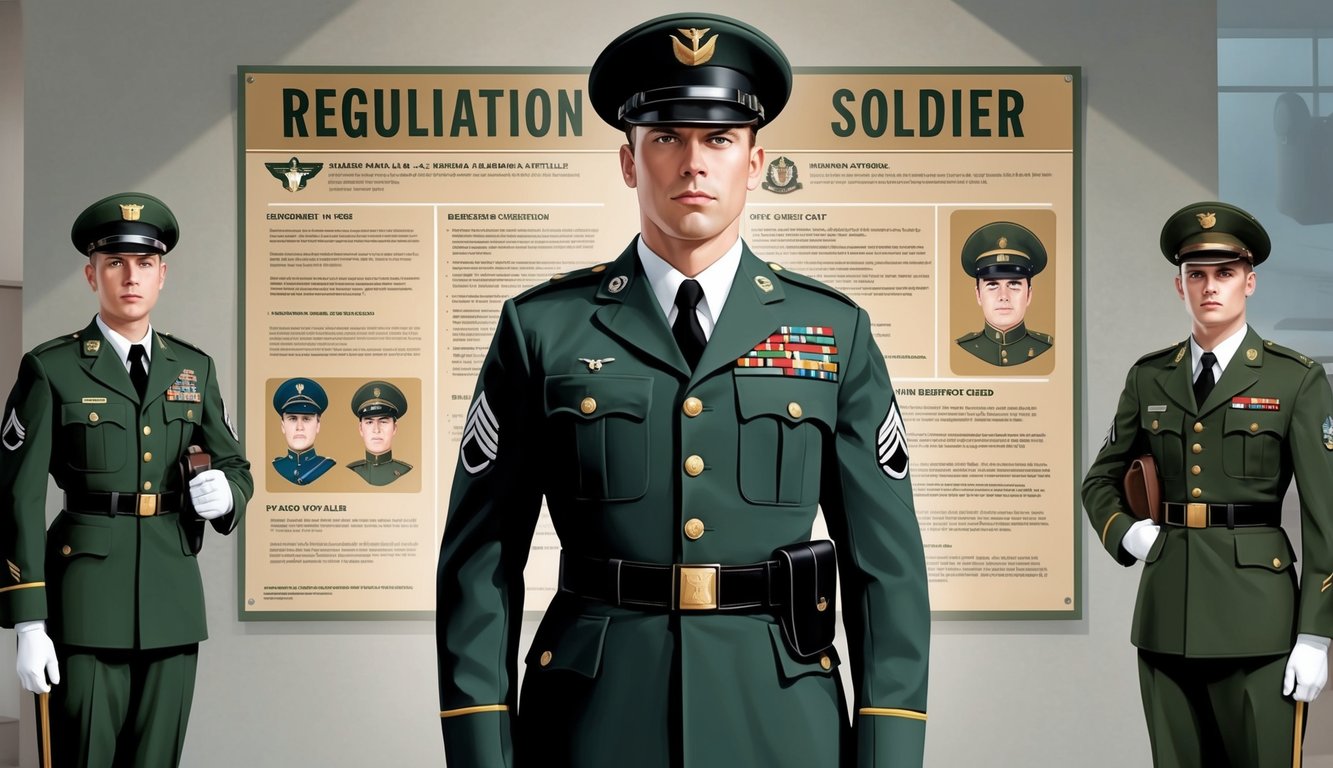
Army uniform regulations foster a professional appearance across ranks, covering everything from grooming to uniform wear.
#### Grooming Standards
Maintaining a neat appearance is essential.
Hair must be kept well-groomed, nails clean, and jewelry limited.
Body piercings are not allowed in uniform, except for women’s earrings in specific scenarios.
### Maintaining Proper Uniform Standards
Your uniform should be clean, pressed, and in good condition, with attention to details like polished shoes and proper insignia placement.
Mixing uniform items with civilian clothing is prohibited while off-duty.
### Historical Context and Evolution

Army uniforms have evolved over time, reflecting changes in military needs and societal expectations, leading to the distinct Class A, B, and C uniforms of today.
#### Origins of Army Uniforms
The U.S. Army’s uniform history dates back to the Revolutionary War, transitioning from blue coats to practical olive drab uniforms in World War II.
### Recent Changes and Future Outlook
In 2020, the Army Green Service Uniform (AGSU) was introduced, paying tribute to the World War II era while signaling a return to tradition.
### Frequently Asked Questions

Questions regarding Army uniforms often arise, addressing assembly and differentiating Class A, B, and C uniforms.
#### How do you set up a Class A uniform in the Army?
To assemble a Class A uniform, begin with the green coat and trousers or skirt, adding a white dress shirt and black necktie.
Then, attach rank insignia, unit patches, and ribbons, ensuring black dress shoes are polished for a complete look.
#### What distinctions exist between Class B and Class C uniforms in the military?
Class B uniforms offer a more relaxed style than Class A while remaining professional, typically featuring a short-sleeve shirt and trousers without a coat.
Class C uniforms are functional combat attire for field operations.
#### Could you explain the components of a Class B uniform for male personnel?
A male Class B uniform includes a short-sleeve khaki shirt, green trousers, and a black belt with a brass buckle.
Black socks and shoes are worn, with insignia and name tags attached to the shirt.
#### What occasions call for wearing the Class C uniform in the Army?
Class C uniforms, or [combat uniforms](https://sucharmy.com/best-body-armor-and-protective-gear/), are designated for field training, deployments, and daily duties, designed for utility and endurance in active environments.
#### In what ways do Class A and Class B uniforms differ for Army personnel?
The most notable difference is the absence of the coat in Class B uniforms, which makes them suited for less formal occasions compared to the more ceremonial Class A.
#### Where can I find a guide for assembling Army Class C uniforms?
Official guidelines for assembling Class C uniforms can be found in Army Regulation 670-1, with your unit’s supply office providing detailed instructions and online official resources offering visual aids and checklists.

